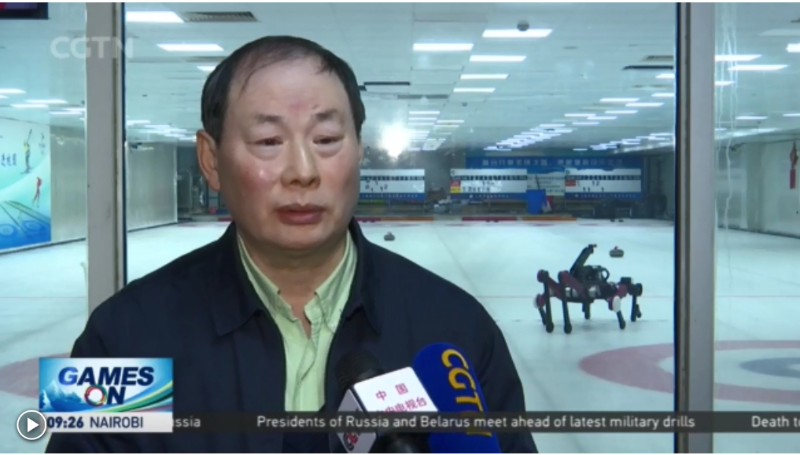
 媒体聚焦
媒体聚焦
Beijing Winter Olympics: A success in winter sport robotic design
CGTN

The world's first human-simulating curling robot made its debut at the Beijing Winter Olympic venue the "Ice Cube" on Friday. Its designer from Shanghai Jiao Tong University discussed the machine with CGTN.
Push off the legs, rotate the stone and bounce out the stone. It's a nice and neat win by knocking out the rival team's stone and staying in the center of the house.
PROF. GAO FENG School of Mechanical Engineering, Shanghai Jiao Tong University "No one before us has successfully developed a legged-robot for curling and skiing."
Some call it "chess on ice". Curling is a game of strategy and accuracy. How to throw a curling stone and calculate like human-beings is a lesson for the robot and its designers to study.
PROF. GAO FENG School of Mechanical Engineering, Shanghai Jiao Tong University "The robot first has to hold the stone and give it a proper rotating speed. Then the robot will detect the direction through sensors to aim for the best target point and determine the path of the stone."
Professor Gao's team has also developed a skiing robot, which can ski through the crowd in a real skiing environment. The robot has completed primary track and intermediate track experiments, and passed tests including stability control, intelligent perception, planning and decision-making.
PROF. GAO FENG School of Mechanical Engineering, Shanghai Jiao Tong University "These robots reflect our technology status, including the visual, the control and the mechanical system design. For example, the main difficulty for the skiing robot is dynamic control in high speed movement. The curling robot, on the other hand, has more complex functions, such as walking and simulating human action through six legs. The Beijing Winter Olympics provides a good opportunity for China's robot research and development. It might be a milestone in academic research."
Zhu Longzhou, CGTN, Shanghai.
-
媒体链接